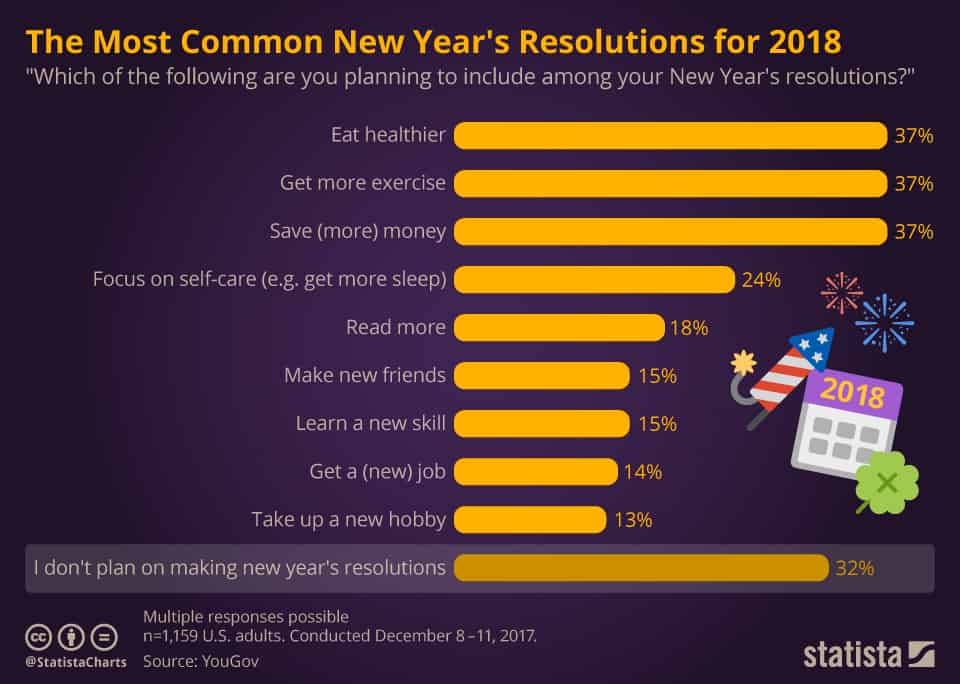
At the end of each year, more than 65% of Americans engage in the traditional act of setting New Year’s resolutions in hopes of leading better lives. We have all done it – we can’t resist the idea of turning over a new leaf and using the change of date to unleash a more productive, healthy, goal-achieving version of ourselves.
Setting New Year’s resolutions isn’t a new age practice. It has roots in every era and is celebrated differently in every group. It has been said that ancient Babylonians were the first people to make New Year’s resolutions about 4,000 years ago. Around mid-March (when their new year began), they would make promises to their gods to return borrowed objects and pay off their debts.
Janus (where the word January comes from) was a mythical god of early Rome. He was the god of beginnings, transitions, time, doorways, passages and endings. He was depicted with two faces: one looking forward and one facing backward. This symbolized looking backward into the old year and forward into the new year.

In 153 B.C., December 31 became a symbolic time for Romans to make resolutions to forgive enemies and enter the new year on a clean slate. Romans looked to Janus to forgive them for their transgressions in the past year and made promises and gave gifts in the hopes that he would forgive them and bless them in the upcoming year.
In the Medieval era, knights took a “peacock vow” after Christmas each year to once again confirm their commitment to chivalry.
Although the desire to tie up loose ends and start the year with a more positive outlook that is infused with goals and plans goes back millennia, humans have yet to find a way to succeed in keeping them.
According to US News, 80% of New Year’s resolutions fail by February. Here are some fun stats discovered in 2007 by Richard Wiseman from the University of Bristol involving 3,000 people:
- 88% of people who set New Year’s resolutions fail.
- 52% of people in that study (who failed) were at first confident that they would succeed.
- Men who set small, measurable goals were 22% more successful than women.
As of yet, the low success rate has not stopped too many people from participating in this motivational tradition. People still persevere to set goals in hopes of self-improvement year after year.
According to a press release issued by YouGov:
- 42% of women aim to save money or save more money compared to 31% of men.
- 41% of women plan to eat healthier and get more exercise in 2018, compared to 33% of men.
- 29% of women intend to focus on self-care (i.e., getting more sleep each night) while only 20% of men plan on doing that.
Below is a more comprehensive look into the most common New Year’s resolutions in 2018 by YouGov.

We would love to hear your funny or sad New Year’s resolutions stories. Submit your answers to this month’s question or share your own experiences, questions and thoughts to Lady Nona by filling out the online form here: nonahood.to/askladynona. Your submissions will be anonymous.
The Question of the Month: How can people achieve long-lasting change in their lives?


